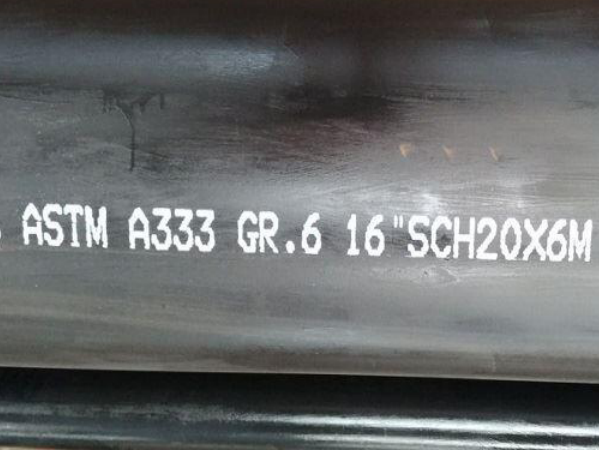Low temperature
carbon steel seamless pipe is a medium carbon structural steel, cold steel has good low energy, good mechanical properties, low price, and a wide range of sources, so it is widely used. Its biggest weakness is low hardenability, and the cross-sectional size of Japanese workpieces is relatively high and should not be used. Cold steel running at low temperature can withstand a certain low temperature impact. A commonly used standard is
ASTM A333.
Low temperature quenching tube A3 + (30 ~ 50) ℃, in practice, is usually set as the upper limit. The quenching temperature is high to low temperature, and the heating rate of the pipe is fast, reducing surface oxidation and improving efficiency. The workpiece is homogeneous austenite and requires sufficient holding time. If the actual furnace capacity is large, the holding time can be appropriately extended. Otherwise, there may be insufficient hardness due to uneven heating. However, if the holding time is too long, serious defects such as coarse grains and oxidative decarburization will also occur, which will affect the quenching quality. We believe that such equipment is larger than the furnace specified in the process file, and the heating needs to be extended by 1/5 of the holding time.

Because the low temperature steel hardenability is low, it should be large cooling rate of 10% salt solution. After the workpiece into the water, it should hardenability, but not chilled, if in cold salt water penetration, it is possible cracking of the workpiece, it is because when the workpiece is cooled to about 180 ℃, the rapid transformation of austenite horse s body tissue caused by excessive stress due. Therefore, when hardened steel rapid cooling to the low temperature region, it should take slow cooling method. As the water temperature is difficult to grasp, accountable experience to operate, when to stop dithering artifacts in the water, the water can be air-cooled (eg oil cooler can be better). In addition, the work should move into the water should not be static, should be in accordance with the geometry of the workpiece, as the rules of sport. Stationary cooling medium plus stationary workpiece, resulting in uneven hardness, stress uneven leaving large deformation of the workpiece, and even cracking.
Cold steel pieces quenched hardness after quenching should reach HRC56 ~ 59, lower section of the possibility of some large, but not less than HRC48, otherwise, it shows the work has not been fully hardened tissues may occur even ferrite sorbitic Organizations, such organizations tempered, still retained in the matrix, which was not quenched purposes. Cryogenic tempering steel after quenching, the heating temperature is usually 560 ~ 600 ℃, hardness is HRC22 ~ 34. Because the goal is to get quenched mechanical properties, so the relatively wide range of hardness. But drawing hardness requirements, it is necessary to adjust by drawing tempering temperature to ensure hardness. For example, some cold steel shafts require high strength, hardness is high; while some gear, shaft parts with keyway, because after quenching but also for milling, insert processing, hardness requirements will be lower. About Tempering time, depending on the hardness and size of the piece, we think, depends on the hardness after tempering tempering temperature, tempering time with little to do, but must return through the general overall at the workpiece Tempering Time more than one hour.


